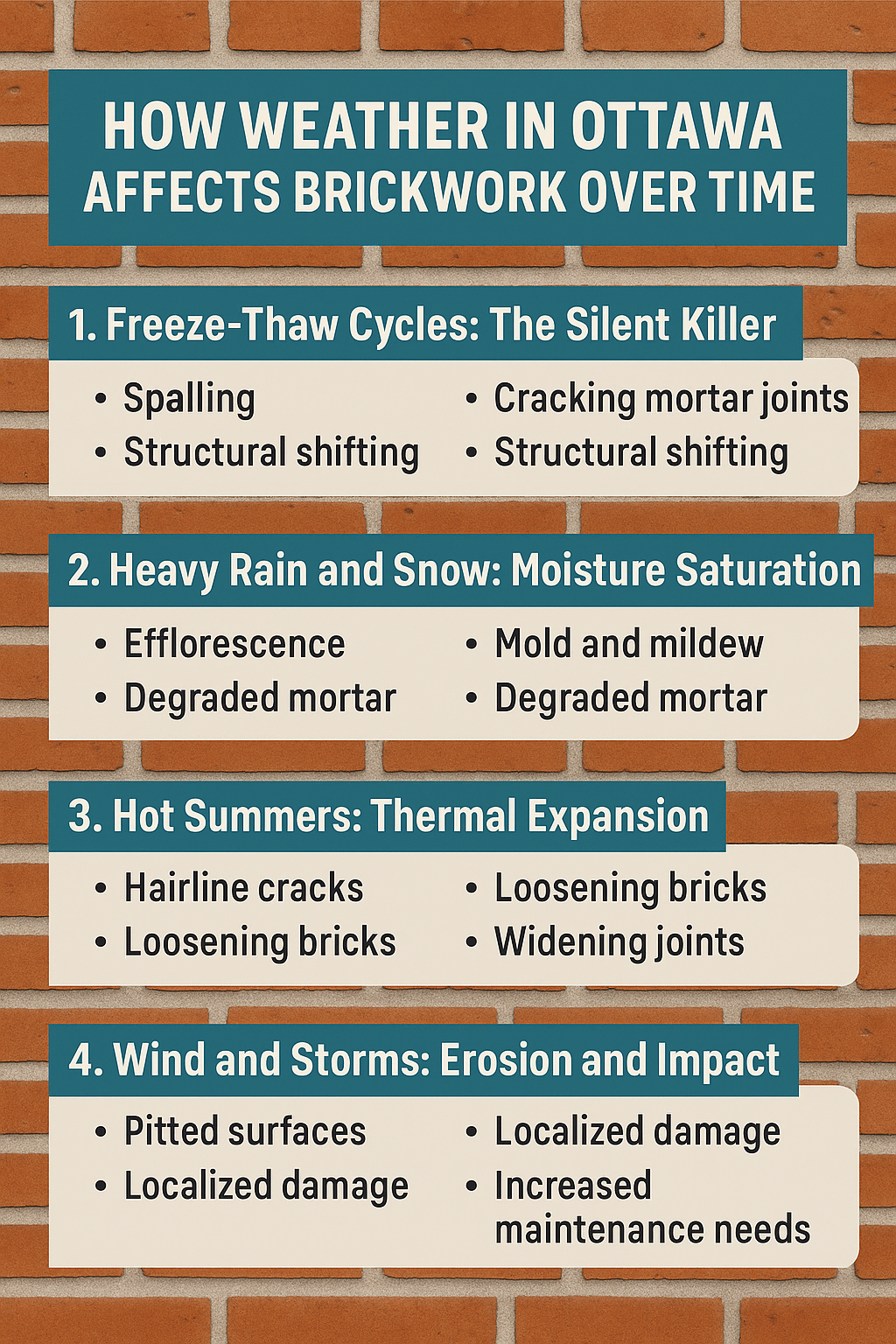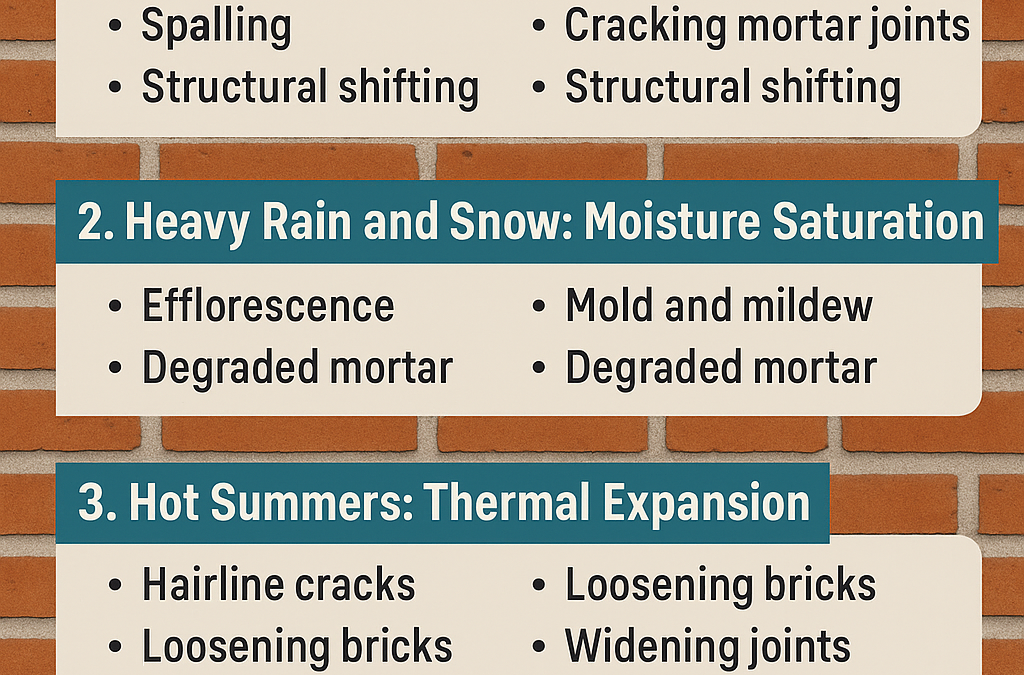Ottawa’s weather isn’t just a conversation starter—it’s a force that can slowly destroy your home’s exterior if you’re not paying attention. Brickwork, often seen as a durable and low-maintenance material, takes a real beating in this city’s climate. Here’s how Ottawa’s weather affects brickwork over time—and what you should do about it.
1. Freeze-Thaw Cycles: The Silent Killer
Ottawa winters bring heavy freeze-thaw cycles. During the day, temperatures might rise above zero; at night, they drop well below. Any moisture that gets into the brick or mortar freezes, expands, and forces tiny cracks to widen.
Over time, this repeated stress causes:
- Spalling: The surface of the brick flakes off.
- Cracking mortar joints: Water seeps in and weakens the bond between bricks.
- Structural shifting: As cracks worsen, entire walls can begin to bow or shift.

2. Heavy Rain and Snow: Moisture Saturation
Ottawa averages around 240 cm of snow annually, along with significant rainfall throughout spring and summer. Brick is porous. It absorbs water—and if it doesn’t get a chance to dry properly, that moisture stays trapped inside.
Long-term moisture exposure can lead to:
- Efflorescence: White salt deposits that leach to the surface.
- Mold and mildew: Especially if the wall is shaded and doesn’t get sun.
- Degraded mortar: Wet mortar weakens and crumbles faster.
3. Hot Summers: Thermal Expansion
Ottawa summers may not be tropical, but they’re no joke. With high humidity and temperatures soaring past 30°C, bricks expand—and then contract as things cool down. This constant movement puts strain on the mortar joints.
What you’ll notice:
- Hairline cracks: Small but dangerous entry points for water.
- Loosening bricks: Especially around windows or door frames.
- Widening joints: Visible gaps between bricks where the mortar used to be snug.
4. Wind and Storms: Erosion and Impact
Ottawa sees strong wind gusts and the occasional severe storm. Wind-driven rain accelerates erosion, while flying debris can chip or crack exposed bricks.
Even if the damage seems minor, it compounds over time:
- Pitted surfaces: Bricks lose their smooth finish.
- Localized damage: Windward-facing walls deteriorate faster.
- Increased maintenance needs: Caulking, repointing, and sealing become more frequent.
How to Protect Your Brickwork in Ottawa
The damage is real—but it’s manageable if you stay ahead of it.
Here’s what to do:
- Inspect annually: Especially after winter. Look for cracks, spalling, and efflorescence.
- Repoint as needed: Replace damaged mortar before it compromises the whole wall.
- Seal the bricks: A breathable masonry sealant helps repel moisture while allowing evaporation.
- Improve drainage: Make sure downspouts and grading direct water away from the foundation.
- Hire professionals for repairs: DIY patch jobs can make things worse if done improperly.
Final Word
Brick is tough, but Ottawa’s weather is tougher. If you own a brick home in this city, keeping an eye on your exterior is essential. The damage isn’t always sudden—it creeps in slowly. But with routine checks and smart upkeep, your brickwork can outlast every season Ottawa throws at it.
Want to make sure your brick home stands strong year after year? Don’t wait for visible damage. Stay proactive—and let the bricks keep doing what they were made to do: protect your home.


Recent Comments